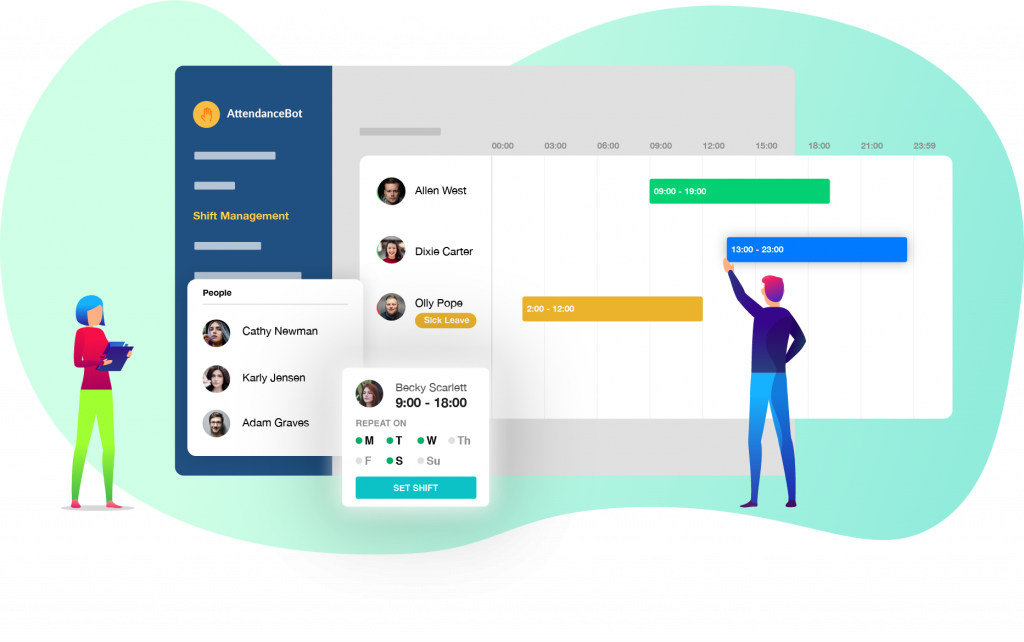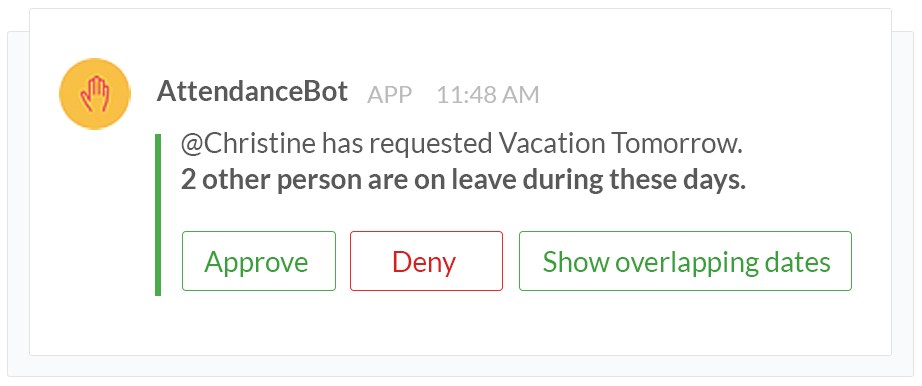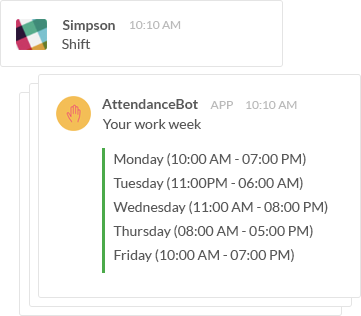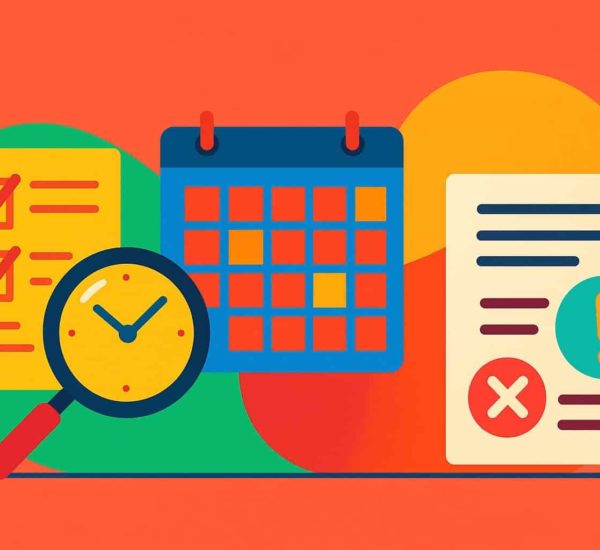Planning your employees’ schedules is not as easy as it looks. If you have a team of employees, you may find it hard to keep track of each person’s schedule. Some may be part-time workers, others may be full-time employees with shorter mornings and longer hours at night, a few may be employees working in shifts, and others may be working remotely. Simply put, employee scheduling is time-consuming.
However, as HR, it’s crucial that you are tracking each employee’s schedule and have a detailed report of their work hours. You can use this report to then optimize their schedule and ensure employees are starting work on time.
With this guide, we want to simplify how you approach employee attendance and provide you with an automated solution to manage your employees better.
Why You Need a Smarter Employee Schedule and Time Tracking System
Many HRs use a spreadsheet to track employee schedules. On top of that, time tracking is done either with biometric scanners at the office entrance or with another spreadsheet or attendance record. This is a poor way to manage employees for a number of reasons.
Filling up a spreadsheet and tracking every employee’s work hours is a time-consuming task. It’s also impossible if you have a large team.
As an HR, you have multiple other priorities and if time-tracking is one of them, the rest of your work is sure to get sidelined.
Moreover, spreadsheets are highly inefficient since you are fallible to enter inaccurate data. Spreadsheets also are a poor tool for HRs to understand trends within their data, like which days employees are taking leave or coming in late.
Biometric scanners, on the other hand, are expensive. Such an investment may not make sense if you move offices often. These scanners are also not scalable for team members who work remotely or have a field role and can’t come into the physical office to record their attendance.
Instead, what you need is an employee schedule and time tracking system that automates this task by collating the information directly from employees.
5 Steps To Create A Schedule And Time Tracking System for Efficient Employee Management
Large companies like Google and Amazon cannot manually track their large team. Instead, they have enabled HR-driven solutions to manage and track their employees and their time. If you’re looking to set up an efficient and self-managed system for your company, this 5-step system should do it.
Step 1: Enable AttendanceBot for employee scheduling
AttendanceBot is AttendanceBot is an app that allows HRs to manage shift schedules, track employee time, and manage leave requests. The bot records attendance of each employee within a dashboard that HRs can access and create attendance reports from.
This is your all-in-one solution to manage your employees and track their work hours without any manual legwork on your part. You can enable AttendanceBot within Slack or Microsoft Teams so that the bot can collect employee responses automatically and without any third-party app.
Wondering how AttendanceBot works? Get the app and give it a spin today!
Step 2: Plan schedules within AttendanceBot
AttendanceBot allows you to record the schedules of your employees so that you can use it to compare it to real-time data about each employee’s attendance. Set up schedules within the bot’s dashboard.
AttendanceBot is also built to simplify shift planning. You can plan schedules for your shift workers on a weekly or monthly within the dashboard. Set up repeat shifts and move around schedule blocks smoothly. The bot also records leaves that employees ask for and you can use the information about pre-planned leaves to create a schedule that works for all your shift workers.

Learn more about employee scheduling with AttendanceBot here.
Step 3: Enable time tracking within Slack
Introduce the time tracking system among employees within your company. With AttendanceBot, employees just need to write “in” within the bot’s chat window on Slack when they start working and type “out” when they are done with work. Build a habit within your team to ensure everyone checks in and out regularly.
AttendanceBot lets users record their lunch hour as well as breaks that they take so that you can learn how your employees spend their workday.
![]()
Leave requests are also processed through the bot. Employees can ask for leave within the AttendanceBot chat on Slack. The request is then sent to the manager in charge of the employee. When the manager approves, the bot records this approved leave within the attendance dashboard and sends the HR a notification about the leave information.

Step 4: Manage shift schedules on the go
AttendanceBot can be integrated within your Slack channel where you discuss shift schedules. Whenever any shift employee wants to change their schedule or is running late for a shift, you can quickly ask for replacements and the bot will record the shift change instantly.
Shift employees don’t have to note down and remember their schedule, either. Instead, they just need to send a message to the bot inside Slack, asking for their upcoming schedules or about all the shifts they have in the coming week. The bot also sends shift workers a reminder when their next shift is about to start so that they start their work at the right time.

Step 5: Review attendance and schedules routinely
Once that you have a system in place, your attendance and time tracking system runs smoothly. AttendanceBot would alert you when employees are late to their shifts and when they request leaves.
With this system, you can do weekly reviews to see whether an employee is late to work and ensure timely check-ins from your employees. We recommend that HRs do a monthly check of their employees to see whether the schedule they have suits their routine and optimize their work hours accordingly.
The AttendanceBot dashboard will easily visualize attendance trends within your employees’ attendance. For instance, you may find that an employee comes in late every Thursday. You can then talk to the employee to understand how you can help them optimize their schedule. They may need an hour extra that day for the responsibilities they have to handle.
With your attendance data automatically managed, you will have time to help your employees set up a schedule that works for them, making them feel valued and motivated to contribute to the company.
5 Types of Work Schedules for Better Schedule Planning
Depending on the industry and role, work schedules differ for different types of employees. Here’s a quick primer to 5 different kinds of schedules.
1. Fixed schedule
Such schedules are used by most companies, especially in traditional work environments. Offices have their usual 9-to-5 or 10-to-6 work timings, with Saturdays and Sundays given off. However, fixed schedules are also used for part-time workers like students who work after class from 4pm to 8pm. To put it simply, timings for such schedules never change and employees have a routine to come in at the same time and leave work at the time specified.
2. Flexible schedule
Unlike fixed schedules, employees with a flexible schedule don’t have to come in to work at a specific time. Instead, employees can choose their work timings and come in whenever they like, as long as they finish their work. Such schedules are highly common in new companies and startups where employees are given the freedom to choose how they work, as long as they get it done.
3. Full-time shift schedule
Shift schedules are crucial for fields that require an employee on the job around the clock. Employees with a full-time shift schedule work 8 hours, either with breaks in between or at a stretch. Companies requiring customer support for their customers usually use this schedule for their shift workers.
4. Part-time shift schedule
Many companies have multiple shift workers hired to work 2 to 4 hours a day. Such schedules are ideal if you require shift employees who are from a certain country or speaking a certain language. Part-time shift schedules have fewer working hours, suitable for students who work part-time or freelancers hired on a contract.
5. Rotating shift schedule
In a rotating shift schedule, employees cover various shifts throughout the day. For instance, the shift employee would cover a day shift and then a few days later, rotate to an afternoon shift. After a set of days pass, the employee then rotates to an evening or night shift. Such a schedule is a great way to ensure every employee maintains a healthy sleep pattern.
Also read: The complete guide to shift management that actually works
Get AttendanceBot Now to Automated Employee Scheduling
We hope this helped you set up a time tracking system that automatically records the number of hours your employees put in and creates attendance reports for you. The bot also sends notifications to keep you in the loop.
Set up AttendanceBot within your work communication platform— whether it’s Slack or Microsoft Teams— for better shift planning and to manage your team more efficiently.



